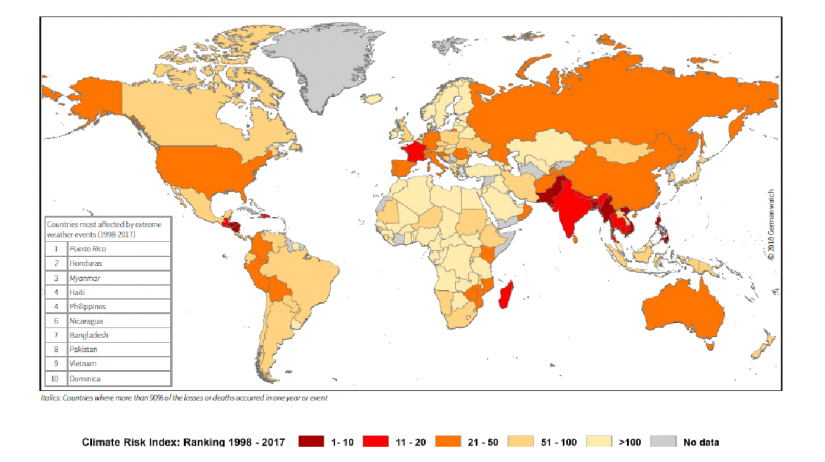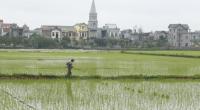 Bangladesh is the seventh most affected country in the world due to “extreme weather events” over the last 20 years from 1998 to 2017, says a new global report.
Bangladesh is the seventh most affected country in the world due to “extreme weather events” over the last 20 years from 1998 to 2017, says a new global report.
The other top nine affected countries are Puerto Rico (1), Honduras (2), Myanmar (3), Haiti (4), the Philippines (5), Nicaragua (6), Pakistan (8), Vietnam (9) and Dominica (10), UNB reports citing the Global Climate Risk Index 2019 released in Poland on Wednesday.
Of the 10 most affected countries and territories (from 1998 to 2017), eight were developing countries in the low-income or lower-middle income country group, one was classified as an upper-middle income country (Dominica) and one an advanced economy generating high income (Puerto Rico).
Bangladesh’s climate risk ranking is 9th in 2017 against 13th position in 2016, says the report.
The study says massive rainfalls have led to floods across Nepal, Bangladesh and India, which affected more than 40 million people.
Some 1, 200 people lost their lives in these three countries and millions were displaced.
The floods spread across the foothills of the Himalayas and brought landslides leaving tens of thousands of houses and vast areas of farmland and roads destroyed.
Nepal experienced flashfloods and landslides in August across the southern border, amounting to damages worth $600 million.
Nearly 250 people were killed by collapsed buildings or drowning in regions of India, Nepal and Bangladesh. As many as 950, 000 houses were damaged or destroyed in the floods.
Puerto Rico, Sri Lanka and Dominica were at the top of the list of the most affected countries in 2017.
Between 1998 and 2017, Puerto Rico, Honduras and Myanmar were the countries most affected by extreme weather events.
Altogether, more than 526, 000 people died as a direct result of more than 11, 500 extreme weather events; and losses between 1998 and 2017 amounted to around US$ 3.47 trillion (in Purchasing Power Parities).
Storms and their direct implications – precipitation, floods and landslides – were one major cause of damage in 2017. Of the ten most affected countries in 2017, four were hit by tropical cyclones.
Recent science has found a clear link between climate change and record-breaking precipitation of 2017’s hurricanes.
It also suggests that the number of severe tropical cyclones will increase with every tenth of a degree in global average temperature rise.
In many cases, single exceptional disasters have such a strong impact that the countries and territories concerned are also ranked high in the long-term index.
The Climate Summit in Katowice should adopt the 'rulebook' needed for the implementation of the Paris Agreement, including the global adaptation goal and adaptation communication guidelines, said the report.
Furthermore, COP24 must increase efforts to properly address loss and damage, which appears as a cross-cutting issue referenced throughout various negotiation streams, with significant risk of being omitted from final negotiation text, reads the report.
The risks of future climate-related losses and damages are far too severe to simply function as a negotiation chip.
The Global Climate Risk Index 2019 analyses to what extent countries and regions have been affected by impacts of weather-related loss events (storms, floods, heat waves etc.).
This year's 14th edition of the analysis reconfirms earlier results of the Climate Risk Index: less developed countries are generally more affected than industrialised countries.


